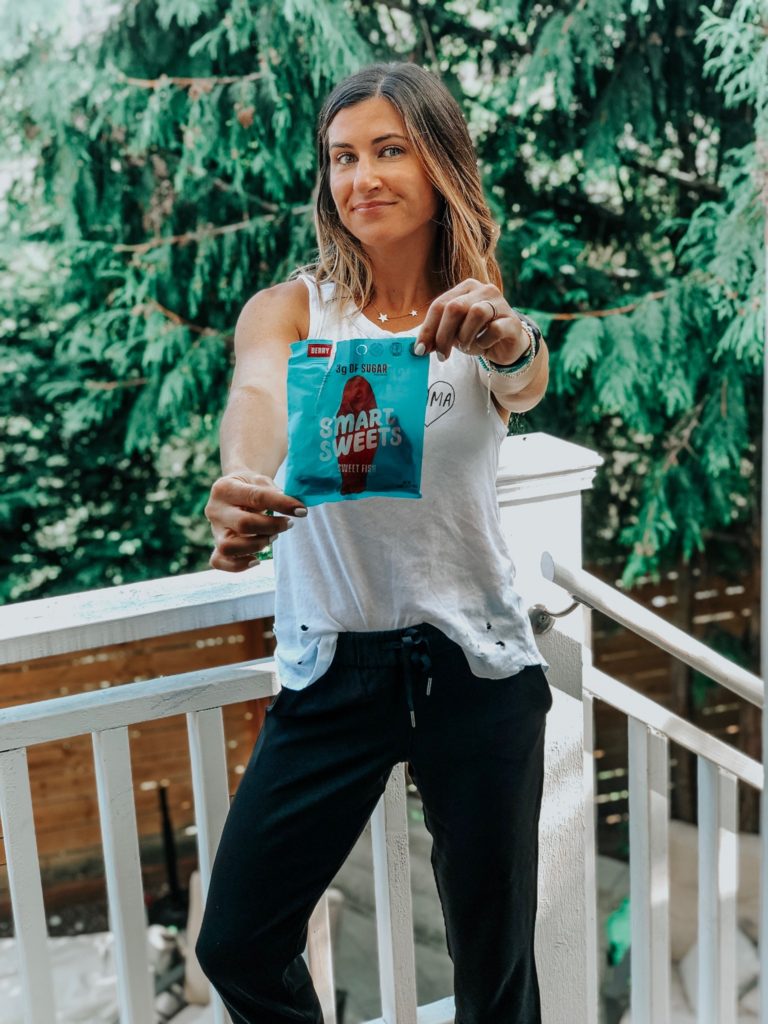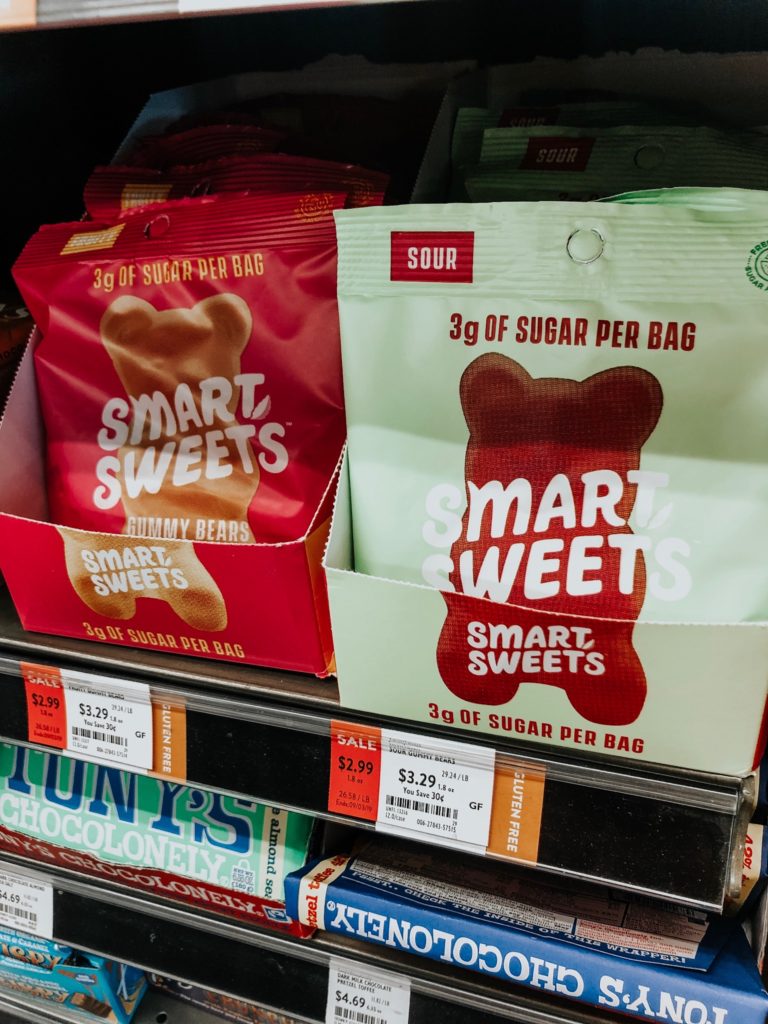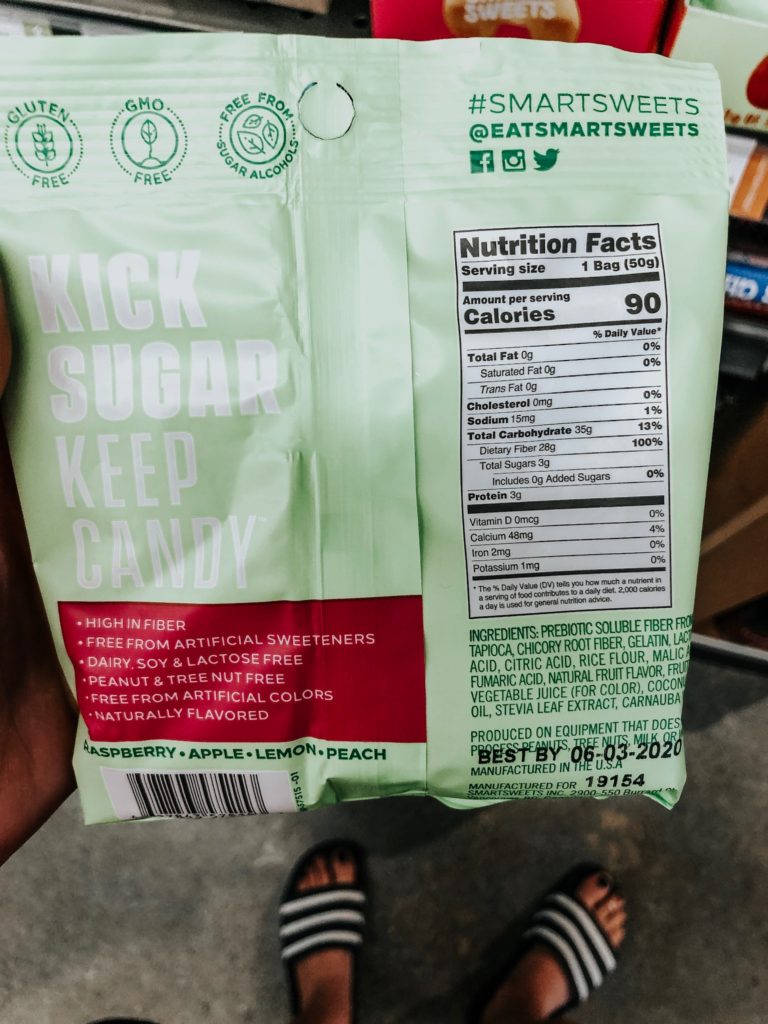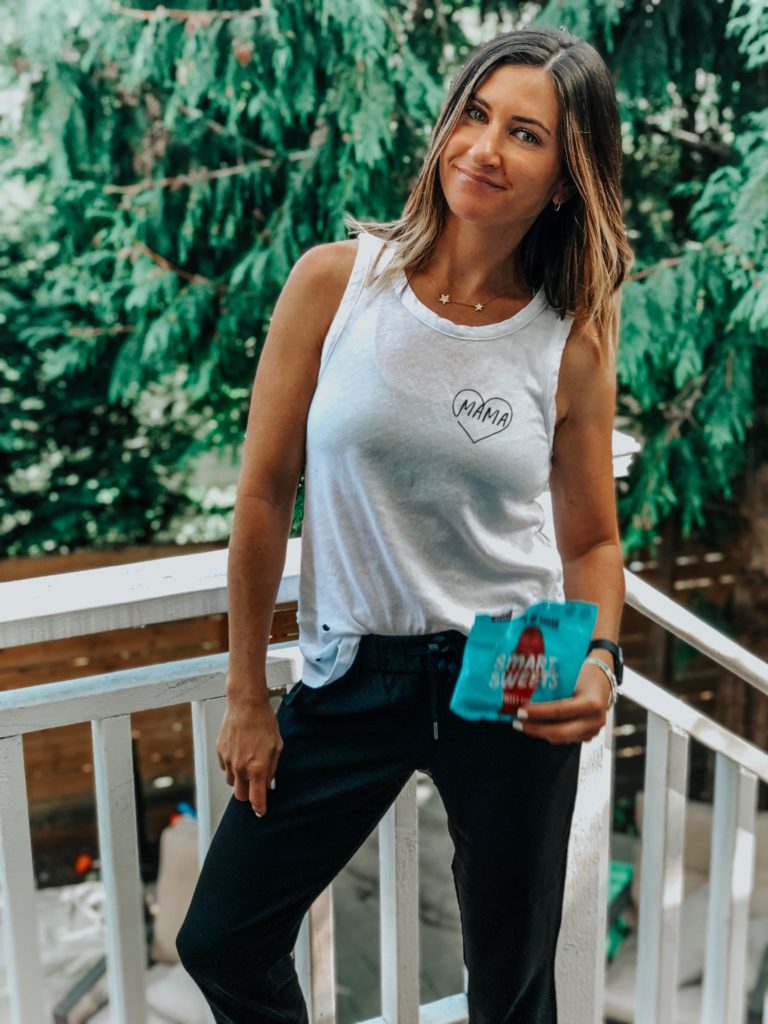
Guys, this is the Halo Top of gummies…I’m serious. I’m blown away by this products’ popularity. You have probably seen this gummies all over social media. They are touted as “healthy” candy and wrapped up in super cute packaging.
I have recently started seeing these pop up all over my Instagram feed even from influencers I consider knowledgeable in the nutrition and health field. While at Whole Foods last week I mindlessly threw these in my cart and brought them home. That night, my sweet tooth kicked in after dinner and I got so excited remembering I had these in my pantry. I flipped the package over and finally read the ingredient label and was shocked. One positive I saw on the packaging is that these are free of sugar alcohols which is great, but it’s packed with many ingredients that are questionable IMO.

The fact that these are touted as “healthy” is extremely misleading. There is also the promise that since these are only 3 grams of sugar per bag it is advertised as a way to “wean off” of sugary candy. First off all, these gummies will still raise your blood sugar and are not diabetic friendly. Also, if you’re trying to manage/decrease sugar cravings these are really sweet tasting because of the stevia. The taste of sweet will continue to increase the drive for more sugar in your diet. You’re not tricking your body with these.
While doing some research on the company and product it was difficult to find an article that was not on board with this candy. One article even stated, “This is one sweet snack you don’t have to feel guilty about eating.” There are many things wrong with this statement, but this is in fact the marketing strategy for this product. The creator of this brand states her motivation for creating this product was due to her unhealthy relationship with food.

Let’s review the ingredients:
chicory root fiber (aka inulin) Many packaged foods that market themselves as “high fiber” are likely pumped full of chicory root fiber. It is a soluble fiber that absorbs water and forms a gel in the gut. It is a source of inulin and fructooligosaccharides. By adding fiber like inulin to processed foods it can provide substance and bulk without the calories and also has a sweet taste to it, so no wonder it’s used here. Some people can tolerate inulin and some cannot. This product is considered safe, but we don’t know how many grams of chicory root fiber (vs. tapioca) is in the gummies which makes it challenging to know how many grams you’re consuming. Typically, most people can tolerate 5-10 grams before experiencing gastrointestinal side effects (think bloating, gas, stomach pains) and I’m thinking there is more than 5 grams of inulin in these gummies with their extremely high fiber count.
Many of the Smart Sweet products contain 28 grams of fiber. This may sound like a good thing because we are always hearing how fiber is good for us, but I find this high number in the form of gummies alarming. Daily fiber recommendations is 25-30 grams and most Americans aren’t achieving this number. I would prefer to see people getting in more fiber via fruits, vegetables, and whole grains (not gummies). Natural sources of soluble fiber inulin (high in prebiotics) are Jerusalem artichoke/sunchoke, jicama, artichoke, asparagus, onion (including onion powder), leeks, garlic (including garlic powder), green/unripe bananas, and wheat.
prebiotic soluble fiber from tapioca is another soluble fiber that is nondigestable. This is another fiber used to bulk up these gummies without adding sugar (but it’s adding carbs and might increase blood sugars). See the rest of my rant about fiber above 😉
stevia leaf extract is a calorie free sugar substitute and about 100-300 times sweeter than sugar meaning it’s SUPER sweet. Some studies claim Stevia has potential health benefits for treating diabetes, hypertension, and obesity. I continue to be on the fence about Stevia… it appears to be safe, but because it is so sweet (without the caloric reward) I think it has the potential to kick up sugar cravings. My recommendation is to use in moderation and be aware of your sugar cravings after consumption.
carnauba wax I had no idea what this was, so I need to look it up. First red flag. Here us what I learned: it is also referred to as Brazil wax or palm wax and is a wax of the leaves of the palm Copernicia prunifera. It appears that carnauba wax in it’s natural form is said to be safe for human consumption. However, it is also used to produce a glossy finish in automobile waxes, shoe polishes, dental floss, and cosmetics. I didn’t dig really deep into this and apparently it is considered safe, but this is one food additive I’m personally going to pass on.
coconut oil I have no issues with coconut oil and use it when cooking at home. I’m glad they used this oil instead of inflammatory vegetable oils.
carrageenan is another food additive I’m not on board with. It is commonly used to help thicken, emulsify, and preserve foods and drinks. It’s a natural ingredient that comes from red seaweed and you will often find this ingredient added to nut milks, meat products, and yogurt. While it is approved by the FDA there is a lot of controversy about this ingredient. There is some evidence to suggest that carrageenan can trigger inflammation, gastrointestinal ulcerations, and can cause damage to your digestive system. Overall, there just are not enough human studies assess a link between carrageenan and digestive health.
lactic acid, citric acid, malic acid, and fumaric acid these are all added to food for different reasons…some are used as preservatives and others are used as flavor enhancers (ex. make flavors “sharper”). All considered safe, but seems like a little science project to me 😉

I did taste one of the “Swedish fish” and it was gross. I just don’t get the hype…they are not “healthy” and they do not taste good. They are cute and trendy.. that is all.
I’ll leave you with this…you’re better off giving yourself permission to have real dessert. Take sugar/sweets/treats/dessert off their pedestal and stop giving them so much damn power over your life. If you’re craving something then have it. Guess what? By giving yourself permission to call the shots without all the food rules you take the power away from food. You stop obsessing over food and food rules. In turn, you will have less cravings for it because you’re not denying yourself what you really want instead of constantly searching for a manufactured “healthier” alternative. This is how you truly improve your relationship with food…by taking the guilt, judgement, and shame out of it. My advice…eat the real thing and move on!!
xx,
Alix
